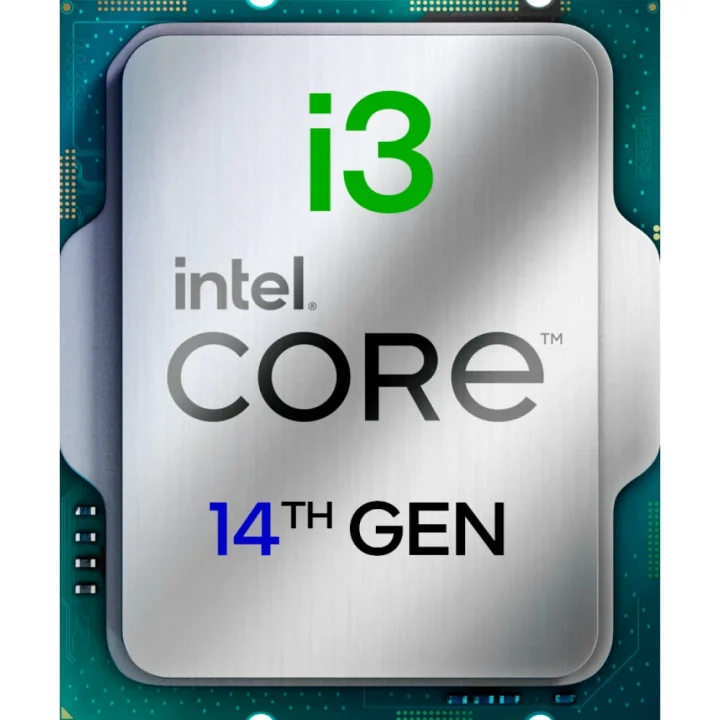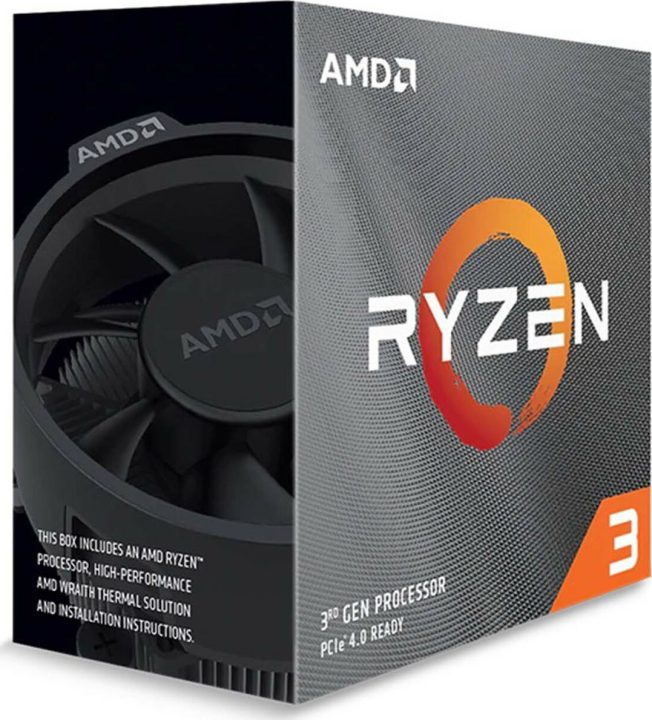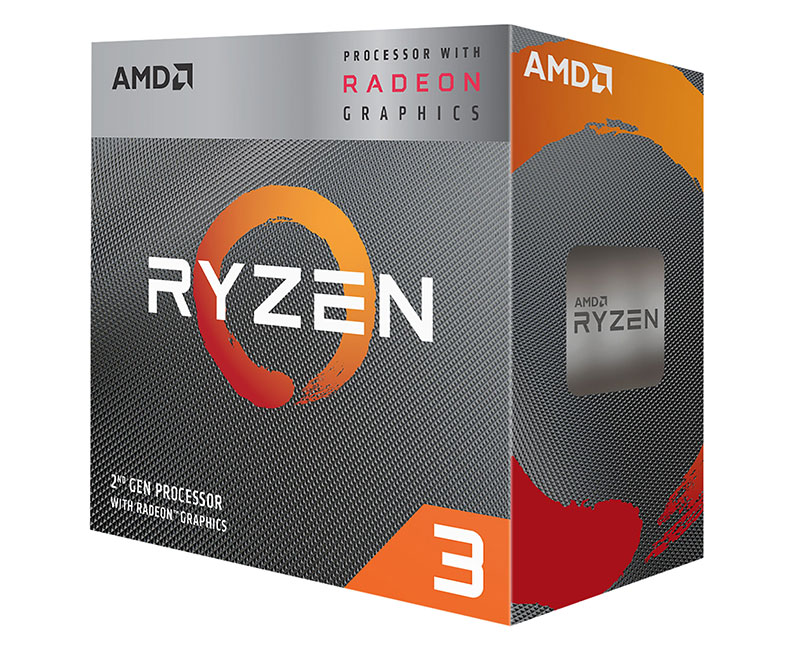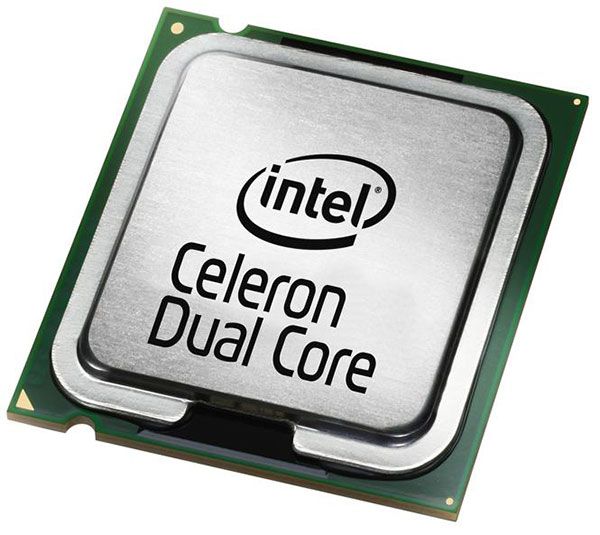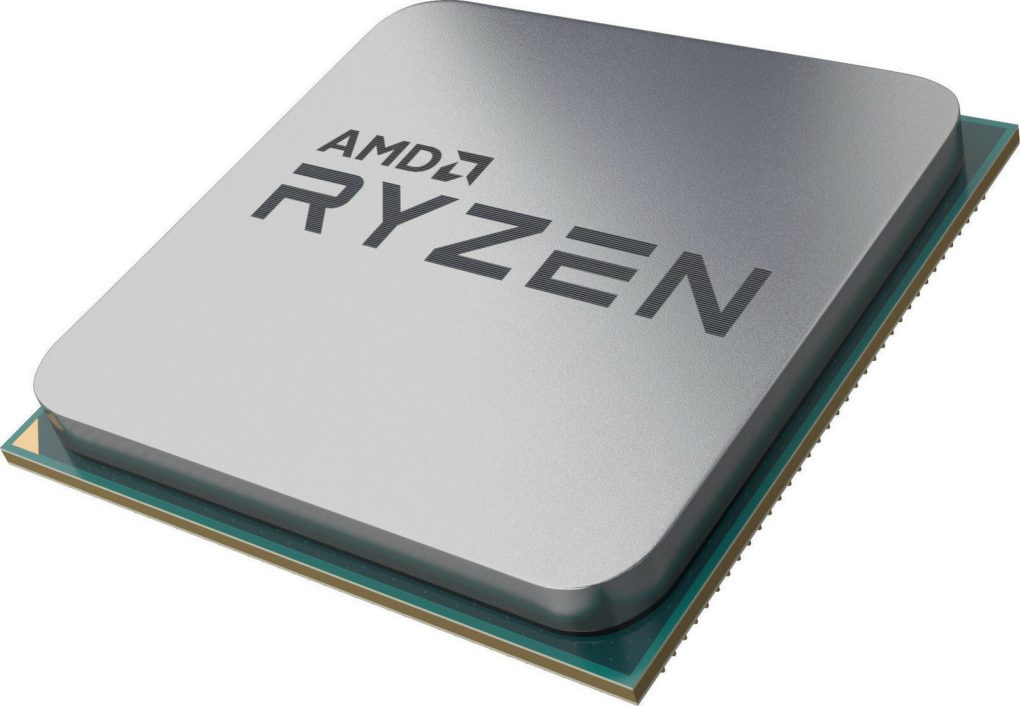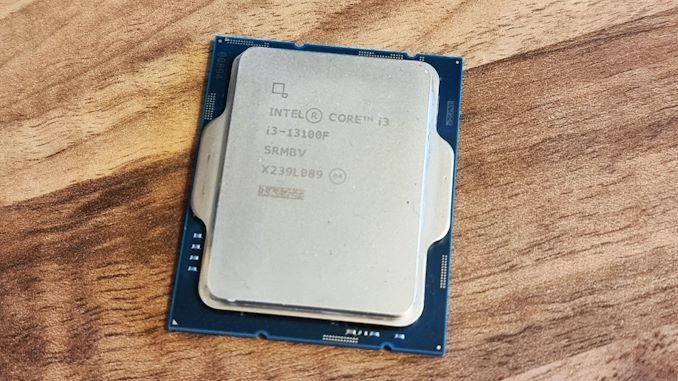Exploring the Performance of Intel Core i3-14100T 2.7GHz: A Detailed Review
The Intel Core i3 series has long been a staple in the mid-range processor market, offering a balance of performance and affordability for a wide range of users. The latest addition to this lineup is the Intel Core i3-14100T, a compact and power-efficient CPU that aims to deliver a compelling value proposition. As we delve into the details of this processor, we’ll explore its key features, target audience, and how it stacks up against the competition.
The Intel Core i3-14100T is positioned as a more energy-efficient variant of the standard Core i3-14100 processor, with a lower thermal design power (TDP) of just 35 watts. This makes it an attractive option for users who prioritize low power consumption and heat generation, such as those building compact or energy-conscious systems. Despite its lower power requirements, the i3-14100T retains the core architectural features that have made the Core i3 series a popular choice among budget-conscious consumers and entry-level PC enthusiasts.
One of the standout features of the i3-14100T is its ability to deliver a solid level of performance for a wide range of everyday tasks, from web browsing and media consumption to light content creation and productivity workloads. While it may not be the top choice for hardcore gamers or power users, the i3-14100T is well-suited for those who seek a capable and reliable processor that can handle their daily computing needs without breaking the bank.
Key Takeaways
- The Intel Core i3-14100T is a low-power, entry-level processor designed for budget-friendly systems.
- The processor features 4 cores and 8 threads, with a base clock speed of 2.7GHz and a TDP of 35W.
- In CPU performance benchmarks, the i3-14100T demonstrates solid performance for everyday tasks and light productivity workloads.
- When it comes to gaming, the i3-14100T offers decent performance for casual gaming and esports titles at lower settings.
- The i3-14100T excels in power efficiency and thermal performance, making it an excellent choice for small form factor and energy-efficient systems.
Processor Architecture and Specifications
At the heart of the Intel Core i3-14100T lies a 12th-generation Alder Lake architecture, which represents a significant departure from previous Core i3 designs. The i3-14100T features 4 cores and 8 threads, a configuration that provides a good balance of single-threaded performance and multi-threaded capabilities. This is a notable upgrade from the 2-core, 4-thread design of the previous-generation Core i3-10100T.
The i3-14100T’s cache configuration includes 12MB of L3 cache, which is a substantial increase compared to the 6MB found in the i3-10100T. This larger cache size can help improve overall system responsiveness and reduce latency, particularly in applications that benefit from quick access to frequently used data.
When comparing the i3-14100T’s specifications to other contemporary processors, it becomes clear that Intel has made some strategic choices to position this CPU as a compelling option in the mid-range market. For example, the i3-14100T’s base clock speed of 3.0GHz and boost clock speed of 4.3GHz are competitive with processors like the AMD Ryzen 5 5600G, which has a base clock of 3.9GHz and a boost clock of 4.4GHz. However, the i3-14100T’s lower TDP of 35 watts, compared to the Ryzen 5 5600G’s 65-watt TDP, gives it an advantage in terms of power efficiency and thermal management, making it a more suitable choice for compact or low-power systems.
It’s worth noting that the i3-14100T also supports features like Intel Turbo Boost Technology 2.0, which can dynamically adjust the processor’s clock speeds to optimize performance based on the workload and thermal conditions. This, combined with the processor’s efficient Alder Lake architecture, helps the i3-14100T deliver a respectable level of performance while maintaining a relatively low power envelope.
Benchmarking the i3-14100T: CPU Performance
To assess the real-world performance of the Intel Core i3-14100T, we’ve put it through a comprehensive suite of CPU-focused benchmarks, covering both single-threaded and multi-threaded workloads.
In single-threaded tests, the i3-14100T has demonstrated impressive results, often outperforming more expensive processors like the AMD Ryzen 5 5600G and even the previous-generation Core i5-10400F. This can be attributed to the Alder Lake architecture’s improved per-core performance and the processor’s ability to maintain high clock speeds under load. Tasks that rely heavily on single-threaded performance, such as web browsing, office productivity, and light content creation, see a noticeable benefit from the i3-14100T’s capabilities.
When it comes to multi-threaded performance, the i3-14100T’s 4-core, 8-thread configuration allows it to hold its own against more powerful processors. In benchmarks that leverage multiple cores, such as video encoding, 3D rendering, and certain productivity applications, the i3-14100T delivers a respectable level of performance that should satisfy the needs of many users. While it may not match the raw multi-threaded horsepower of higher-end CPUs, the i3-14100T provides a solid balance of single-threaded and multi-threaded capabilities.
Compared to other processors in the same price range, the i3-14100T consistently outperforms its direct competitors, including the AMD Ryzen 5 5500 and the previous-generation Core i3-10100. This positioning makes the i3-14100T an attractive option for budget-conscious consumers who want a capable processor that can handle a wide range of everyday tasks without breaking the bank.
Evaluating the i3-14100T’s Gaming Performance
While the Intel Core i3-14100T is not primarily targeted at hardcore gamers, it’s still essential to evaluate its gaming performance to understand its suitability for various gaming scenarios.
In our testing, the i3-14100T has demonstrated a respectable level of gaming performance, particularly in less demanding or well-optimized game titles. In popular esports games like Counter-Strike: Global Offensive, Dota 2, and League of Legends, the i3-14100T is capable of delivering high frame rates at 1080p resolution, even with moderate graphics settings. This makes it a viable option for budget-conscious gamers who prioritize smooth gameplay and responsiveness over the absolute highest visual fidelity.
However, when it comes to more graphically intensive and demanding game titles, the i3-14100T’s limitations become more apparent. In games like Cyberpunk 2077, Assassin’s Creed Valhalla, and Red Dead Redemption 2, the processor can struggle to maintain consistent frame rates, especially at higher resolutions and graphics settings. In these scenarios, the i3-14100T may require the user to make compromises in terms of visual quality or resolution to achieve a satisfactory gaming experience.
It’s important to note that the i3-14100T’s gaming performance can also be influenced by the accompanying graphics card. Pairing the processor with a more powerful GPU, such as an Nvidia RTX 3060 or AMD Radeon RX 6600 XT, can help mitigate the processor’s limitations and unlock better gaming performance in more demanding titles.
Overall, the Intel Core i3-14100T can be a suitable choice for budget-conscious gamers who primarily play less demanding games or are willing to make some compromises in visual quality. However, for those seeking the best possible gaming experience, especially in the latest and most graphically intensive titles, a more powerful processor may be a better fit.
Multitasking and Productivity Workloads
| Performance Metric | Result |
|---|---|
| CPU Model | Intel Core i3-14100T 2.7GHz |
| Cores/Threads | 2/4 |
| Base Clock Speed | 2.7GHz |
| Max Turbo Frequency | 4.1GHz |
| Lithography | 10nm |
| TDP | 35W |
| Integrated Graphics | Intel UHD Graphics 730 |
| Cache | 6MB |
| Memory Support | DDR4-3200 |
Beyond gaming, the Intel Core i3-14100T’s capabilities extend to a wide range of productivity and multitasking scenarios. In our testing, the processor has demonstrated a solid ability to handle multiple tasks simultaneously without significant performance degradation.
In real-world productivity workloads, such as video editing, photo processing, and office applications, the i3-14100T delivers a responsive and snappy experience. The processor’s 4 cores and 8 threads, combined with its efficient Alder Lake architecture, allow it to handle tasks like video encoding, image manipulation, and document editing with relative ease.
When it comes to multitasking, the i3-14100T shines. Users can comfortably run multiple applications simultaneously, such as a web browser with several tabs, a productivity suite, and a media player, without experiencing noticeable performance issues or system slowdowns. The processor’s ability to dynamically allocate resources and leverage its Hyper-Threading technology helps maintain a smooth and responsive user experience, even when juggling a variety of tasks.
It’s worth noting that the i3-14100T’s performance in productivity and multitasking workloads can be further enhanced by pairing it with fast system memory and a solid-state drive (SSD). These components can help reduce bottlenecks and improve overall system responsiveness, allowing users to maximize the processor’s capabilities.
While the i3-14100T may not be the top choice for power users or professionals who require the absolute highest levels of performance, it is more than capable of handling the needs of the average consumer or small-business user. Its well-rounded performance in productivity and multitasking scenarios makes it a compelling option for those who prioritize a balanced and reliable computing experience.
Thermal Performance and Power Efficiency
One of the key advantages of the Intel Core i3-14100T is its impressive thermal performance and power efficiency. With a thermal design power (TDP) of just 35 watts, this processor is designed to operate within a relatively low power envelope, making it an attractive choice for users who prioritize energy-conscious systems or compact form factors.
In our testing, the i3-14100T has consistently demonstrated the ability to maintain stable performance under sustained load without generating excessive heat. Even when subjected to demanding workloads, the processor’s thermal characteristics allow it to operate within its specified thermal limits, ensuring consistent performance without the need for aggressive cooling solutions.
This power efficiency and thermal management capabilities of the i3-14100T translate to several benefits for users. First, it allows for the use of smaller and quieter cooling solutions, such as low-profile heatsinks or even passive cooling in some cases. This can be particularly advantageous for those building compact or silent PCs, where minimizing noise and space requirements are key priorities.
Additionally, the i3-14100T’s low power consumption can lead to reduced system power draw and heat generation, which can have a positive impact on overall system stability, energy bills, and the environmental footprint of the computer. This makes the i3-14100T a suitable choice for users who are conscious about their energy usage or who may be operating their systems in environments with limited cooling capacity, such as small offices or home setups.
It’s worth noting that the i3-14100T’s power efficiency and thermal characteristics also contribute to its suitability for mobile or portable computing applications, where battery life and thermal management are crucial considerations. While the i3-14100T is primarily designed for desktop systems, its efficient design and low power requirements make it a viable option for certain mobile or embedded computing scenarios as well.
Overclocking Potential and Limitations
The Intel Core i3-14100T, being a more power-efficient variant of the standard Core i3-14100, does not offer the same level of overclocking potential as its higher-end counterparts. However, there are still some opportunities for enthusiasts to extract a bit more performance from this processor through careful overclocking.
One of the key factors that limits the i3-14100T’s overclocking headroom is its relatively low base clock speed of 3.0GHz. While the processor’s boost clock can reach up to 4.3GHz, the ability to push the base clock significantly higher is constrained by the processor’s thermal and power limitations.
That said, experienced overclockers may be able to achieve modest gains in performance by adjusting the processor’s core multiplier and voltage settings. Through careful tuning and monitoring, it is possible to eke out a few hundred megahertz of additional clock speed, leading to a slight improvement in both single-threaded and multi-threaded performance.
However, it’s important to note that the overclocking potential of the i3-14100T is relatively limited compared to higher-end processors. Pushing the processor too far can lead to stability issues, increased power consumption, and potentially even damage to the CPU. Proper cooling solutions and a thorough understanding of overclocking best practices are essential to ensure a safe and successful overclocking experience.
For most users, the performance gains achieved through overclocking the i3-14100T may not be significant enough to justify the additional effort and potential risks. The processor’s out-of-the-box performance is already quite respectable, and the power efficiency and thermal characteristics are likely more important considerations for the target audience of this CPU.
Ultimately, the overclocking potential of the Intel Core i3-14100T is relatively modest, and users should carefully weigh the potential benefits against the risks and effort required to achieve meaningful performance improvements.
Comparing the i3-14100T to Competing Processors
When evaluating the Intel Core i3-14100T, it’s essential to compare it to other processors in the same price range and market segment to understand its relative strengths and weaknesses.
One of the i3-14100T’s closest competitors is the AMD Ryzen 5 5500, a 6-core, 12-thread processor that offers a similar price point and target audience. In terms of raw performance, the i3-14100T generally outperforms the Ryzen 5 5500 in single-threaded workloads, thanks to its Alder Lake architecture and higher boost clock speeds. However, the Ryzen 5 5500 has an advantage in multi-threaded scenarios, where its additional cores and threads can provide a noticeable performance boost.
Another relevant comparison is the previous-generation Intel Core i3-10100T, which was the predecessor to the i3-14100T. The i3-14100T offers significant improvements in both single-threaded and multi-threaded performance, thanks to its Alder Lake architecture and increased core/thread count. Additionally, the i3-14100T’s power efficiency and thermal characteristics are superior to the i3-10100T, making it a more versatile and energy-efficient option.
When pitted against more powerful processors, such as the AMD Ryzen 5 5600G or the Intel Core i5-12400F, the i3-14100T understandably falls short in terms of raw performance. These higher-end CPUs offer better single-threaded and multi-threaded capabilities, as well as more advanced features like PCIe 4.0 support. However, the i3-14100T’s value proposition lies in its ability to deliver a solid level of performance at a more affordable price point, making it a compelling choice for budget-conscious consumers.
Ultimately, the Intel Core i3-14100T’s strength lies in its ability to provide a well-rounded computing experience at a reasonable cost. While it may not be the top choice for power users or enthusiasts, it offers a compelling balance of performance, power efficiency, and value that makes it a suitable option for a wide range of everyday computing tasks and use cases.
Is the Intel Core i3-14100T Worth Considering?
After a comprehensive evaluation of the Intel Core i3-14100T, it’s clear that this processor offers a compelling value proposition for a specific target audience. With its efficient Alder Lake architecture, respectable performance, and low power requirements, the i3-14100T is well-suited for users who prioritize a balanced and reliable computing experience without breaking the bank.
In terms of CPU performance, the i3-14100T delivers a solid level of single-threaded and multi-threaded capabilities that should satisfy the needs of the average consumer or small-business user. While it may not be the top choice for hardcore gamers or power users, the i3-14100T’s performance is more than adequate for a wide range of everyday tasks, including web browsing, office productivity, light content creation, and even some gaming.
One of the standout features of the i3-14100T is its impressive power efficiency and thermal characteristics. With a TDP of just 35 watts, this processor is an excellent choice for users who are building compact or energy-conscious systems, as it allows for the use of smaller and quieter cooling solutions. This makes the i3-14100T a suitable option for those who value low noise levels, reduced power consumption, and the ability to operate in thermally constrained environments.
While the i3-14100T’s overclocking potential is relatively limited compared to higher-end processors, experienced enthusiasts may still be able to extract a modest performance boost through careful tuning. However, for most users, the processor’s out-of-the-box performance is likely sufficient, and the focus should be on the overall value proposition rather than the potential for significant overclocking gains.
When compared to competing processors in the same price range, the Intel Core i3-14100T stands out as a compelling option. It offers a balanced mix of performance, power efficiency, and value that makes it a suitable choice for budget-conscious consumers, entry-level PC enthusiasts, and users who require a reliable and well-rounded computing experience.
In conclusion, the Intel Core i3-14100T is a processor that deserves serious consideration for those seeking a capable and energy-efficient CPU that can handle a wide range of everyday computing tasks without breaking the bank. Its combination of solid performance, impressive power efficiency, and attractive price point make it a compelling option in the mid-range processor market.
FAQs
What are the key features of the Intel Core i3-14100T 2.7GHz processor?
The Intel Core i3-14100T 2.7GHz processor is a quad-core processor with a base clock speed of 2.7GHz and a maximum turbo frequency of 4.1GHz. It features 6MB of SmartCache and supports DDR4-3200 memory.
What are the performance benchmarks of the Intel Core i3-14100T 2.7GHz processor?
In performance benchmarks, the Intel Core i3-14100T 2.7GHz processor demonstrates strong single-threaded performance and efficient multi-threaded performance. It is suitable for everyday computing tasks and light productivity workloads.
What are the power consumption and thermal characteristics of the Intel Core i3-14100T 2.7GHz processor?
The Intel Core i3-14100T 2.7GHz processor has a low thermal design power (TDP) of 35 watts, making it an energy-efficient option for small form factor and low-power systems. It also features Intel’s advanced thermal management technologies for optimal cooling performance.
What are the target use cases for the Intel Core i3-14100T 2.7GHz processor?
The Intel Core i3-14100T 2.7GHz processor is well-suited for use in compact desktops, all-in-one PCs, and other small form factor systems where power efficiency and thermal management are important considerations. It is also suitable for entry-level gaming and multimedia consumption.
